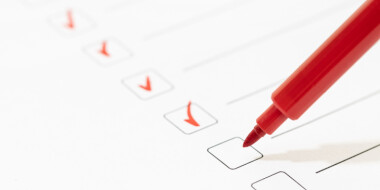The United States Medical Licensing Examination, known as USMLE, is an examination that consists of three steps (Step 1, Step 2, which has two subcategories and Step 3) and is required for anyone who wants to practice medicine in the United States.
All three steps of the USMLE complement each other, assessing the physician`s skills and abilities, meaning that a step cannot stand alone in the assessment of readiness for medical licensure. Therefore the successful completion of three of them is of utmost importance for the learners.
From the point of view of English, the exam format focuses mainly on medical vocabulary and some general wordstock. While preparing the students for the exam English teachers can equip them with the continuous and structured flow of the instruction of active vocabulary and take up the role of the patient when it comes to Step 2 Clinical Skills.
Step 1
Step 1 assesses not only the exam taker’s general understanding of the sciences which are on the basics to the practice of medicine, with special emphasis on principles and mechanisms underlying health, disease, and modes of therapy but also the ability to apply those important concepts in practice.
Here is a sample of Step 1 case which can serve as a good illustration of the main vocabulary format.

As for the English part throughout the material of all 3 Steps Present Simple, Past Simple, Present Perfect and Passive Voice are used vastly. This can be a good guideline for the teacher to give the learner ample of opportunities to practice the given tenses.
Step 2
Step 2 assesses whether you can apply medical knowledge, skills, and understanding of clinical science essential for the provision of patient care under the supervision and includes an emphasis on health promotion and disease prevention.
A teacher can provide the students with a comprehensive list of words on the given topics. These topics are dwelt upon in the materials for Step 2. ( Immune System, Blood & Lymphoreticular Systems, Behavioral Health, Nervous System & Special Senses, Skin & Subcutaneous Tissue, Musculoskeletal System, Cardiovascular System, Respiratory System, Gastrointestinal System, Renal & Urinary Systems, Pregnancy, Childbirth, & the Puerperium, Female Reproductive System & Breast, Male Reproductive System Endocrine System, Multisystem Processes & Disorders, Biostatistics & Epidemiology/Population Health).
This link may serve as a good preparation tool for the learners not only in terms of the vocabulary items but also for the general medical knowledge. Besides, learners can also listen to the right pronunciation of the words.
Step 2 Clinical Skills
Step 2 Clinical Skills tests the exam taker’s ability to communicate with the standardized patients on their complaints, take notes and come up with the diagnosis. The main symptoms are abdominal pain, chest pain, back pain, confusion, easy bruising, palpitations, itching, child and adolescent behavioral concerns, memory loss, loss of appetite, etc.
As during this part of the exam, exam takers need to communicate with the patients, there are a number of functional language items that they use. This video is a nice example of the language used and how the exam taker should behave.
To reinforce the vocabulary touched upon in each case (Step 2 Clinical Skills), the students may be assigned to write out the active vocabulary from each case and make up a new case to be role-played during the upcoming lesson. In this way, they will memorize the words better. Alternatively, a teacher may make up a list of functional language items after the role-play of each case.
A teacher can work with exam takers on the development of their note-taking skills not only in terms of grammar but also spelling. Notes can be checked, commented and rewritten to practice also the time management which is a crucial aspect in USMLE exams.
Step 3
As Step 3 assesses whether you can apply medical knowledge and understanding of biomedical and clinical science essential for the unsupervised practice of medicine, with emphasis on patient management in ambulatory settings. A teacher may help the exam taker with the constructed provision of medical vocabulary which can be sorted out from exam questions and included in a glossary.
Coursebooks to use for exam preparation:
“Biochemistry“, “Pharmacology“, “Microbiology“ by Lippincott Williams & Wilkins
“Physiology“ by Linda S. Costanzo
“Rapid review Pathology“ by Edward F. Goljan
Kaplan Medical “Anatomy: Lecture Notes“, “First Aid“
“Behavioral Science in Medicine“ by Barbara Fadem
Oxford English for Careers “Medicine 1“
Despite the wide range of Medical English Resources available online and offline, the learners who are getting ready for the USMLE exams are strongly advised to work on the vocabulary items provided in the sample items in the preparation materials for Step 1, 2 and 3.






 Анна Тетерина
Анна Тетерина 
 Анастасия Юферева
Анастасия Юферева 


